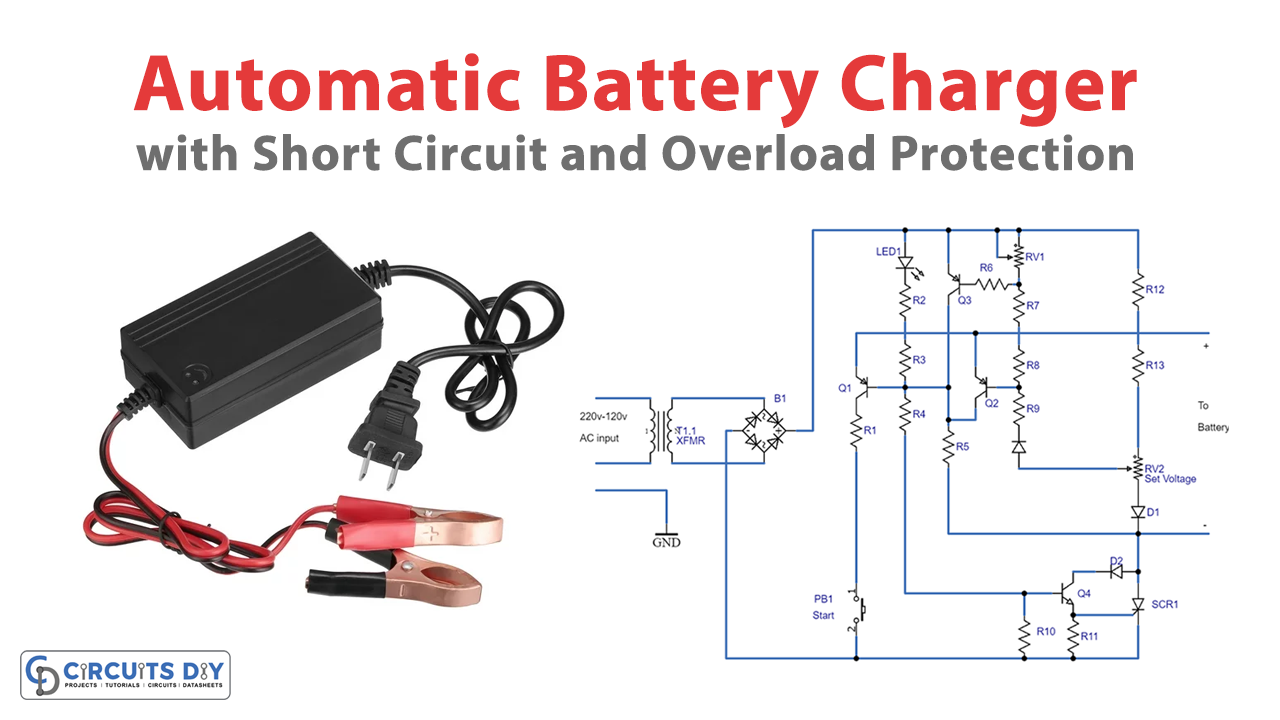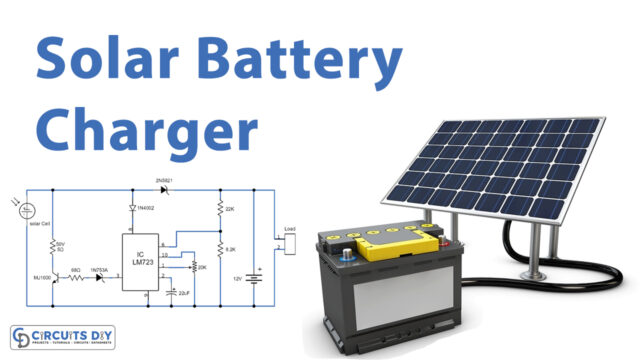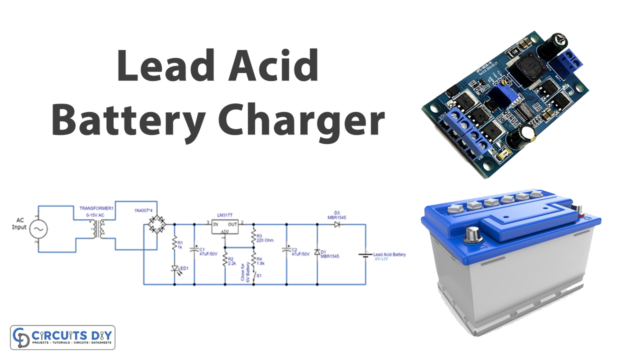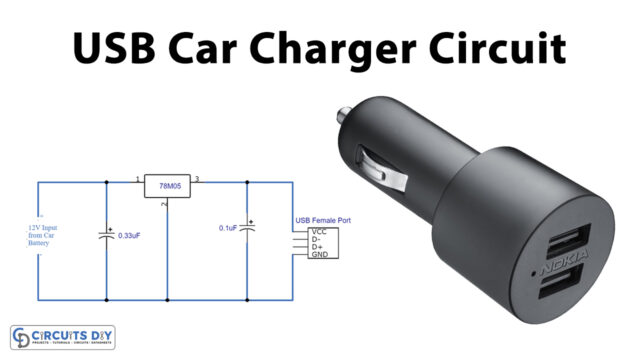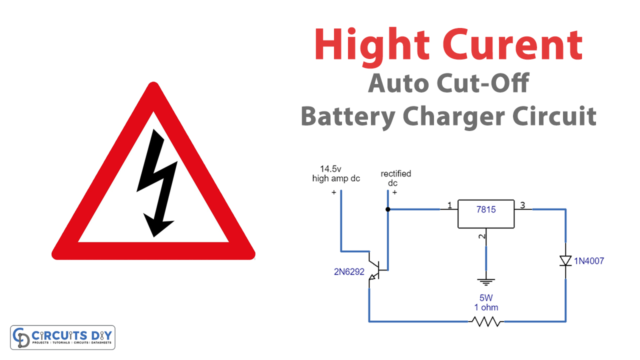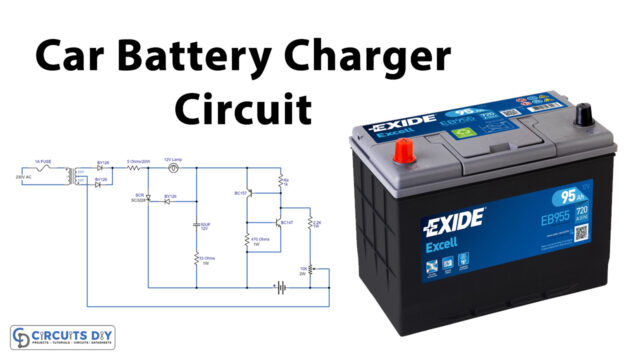Introduction
Are you tired of battery chargers that burn out or get damaged when misused? This post describes a 12 V battery charger designed to be virtually indestructible, as it is fully protected against short circuits and overload current. This means that the charger will never burn or get damaged, regardless of the output situation, and will enable the connected battery to charge with pre-programmed voltage and current ratings.
In this blog, we’ll dive into the inner workings of this incredible device and show you how to adjust it for optimal performance. Get ready to say goodbye to unreliable battery chargers and hello to a truly great charger!
The Importance of Protection in Battery Chargers
Designing a fully protected charger is a challenging task, as it requires ensuring that the charger is capable of functioning during a short circuit, is undamaged by charging attempts or a reversely connected battery, is capable of functioning into a completely flat battery, is regulated for voltage and current, and is able to float a fully charged battery for prolonged periods. The short circuit-proof battery charger described in this post checks all of them, making it an excellent choice for charging 12 V lead-acid batteries.
Hardware Components
The following list of electronic components is required to make an Automatic Battery Charger with a short-circuit
| S.no | Components | Value | Qty |
|---|---|---|---|
| 1 | Transformer | 220V/120V | 1 |
| 2 | Transistor | Q1 – BC177 Q2, 3 – BC178 Q4 – 2N3642 | 1 2 1 |
| 3 | Resistor | R1 – 15k R2 – 10 R3, 10 – 1k R4 – 22k R5 – 4.7k R6, 7, 8, 13 – 2.2k R9 – 330 R11 – 100 R12 – 0.25 | 1 1 2 1 1 4 1 1 1 |
| 4 | V. Resistor | RV1 – 10k RV2 – 1k | 1 1 |
| 5 | Polar Capacitor | C1 – 33uF / 6.3V C2 – 25uF / 25V | 1 1 |
| 6 | LED | Light Emitting Diode TIL209 | 1 |
| 7 | SCR | C20D, BTY78-400R | 1 |
| 8 | Diode | D2,3 – 1N4001 | 1 |
| 9 | Zener Diode | 9.1Volt BZY88CI9V1 | 1 |
| 10 | Diode Bridge | BY-164 | |
| 11 | Push Button | – | 1 |
Circuit Diagram

Working Explanation
The battery charger is a switching regulator that limits the output voltage to 14 V and the output current to 4 A. There are two modes of regulation – current and voltage – and the changeover between these modes is quite severe. If the voltage increases by 0.1 V over 14 V, the output current drops from 4 A to 0 A.
The charger is controlled by SCR1, whose gating sensitivity is elevated by transistor Q4. A current of 2 mA via R1 is enough to switch on Q4 and SCR1. Current flows through R5 and the base-emitter junction of Q1, turning it on when a battery is attached with the correct polarity across the output terminals. This generates current in R1, enough to turn on Q4 and SCR1.
The current flowing through SCR1 is detected by R12, and if it is more than 4 A (average), Q2 will be switched on and retained in that state for a short interval depending on the charge on C1. The switching on of SCR1 on the next half-cycle is postponed, and as a result, the average current is reduced, ensuring that the current steadies at 4 A.
Once the battery reaches the 14 V mark, transistor Q3 will be switched on, and RV2 will set the turn-on point. This deters SCR1 from switching on until after some time by overtaking the base current of Q1, and the current continues to drop until the voltage across the battery stabilizes at 14 V.
Adjustment
To adjust the charging current, use an ammeter (10 A range) in series with a flat battery, and adjust RV1 for a 4 A charge current. Alternatively, you may adjust the voltage across R12 using RV1 to 1 V while charging a flat battery. In this case, it is recommended to use a 2.5 V or higher meter range. When adjusting the voltage, ensure the battery is fully charged, which will cause the current to fall. Once it has dropped to 2 A, tune RV2 for 14 V across the battery.
Safety Features
The battery charger is designed to be fully protected against short circuits, overload current, and reverse polarity connections. It is also equipped with a protection fuse that will blow if you attempt to press the start button while shorting the leads, although this is less likely to happen and is included as a precautionary step.
Conclusion
The fully automatic battery charger with short circuit and overload protection described in this post is an excellent choice for charging 12 V lead-acid batteries. It is designed to be virtually indestructible and is fully protected against short circuits and overload currents. It ensures the battery charger will never burn or get damaged, regardless of the output situation. Try this circuit, and for any queries, feel free to comment. Happy building!

